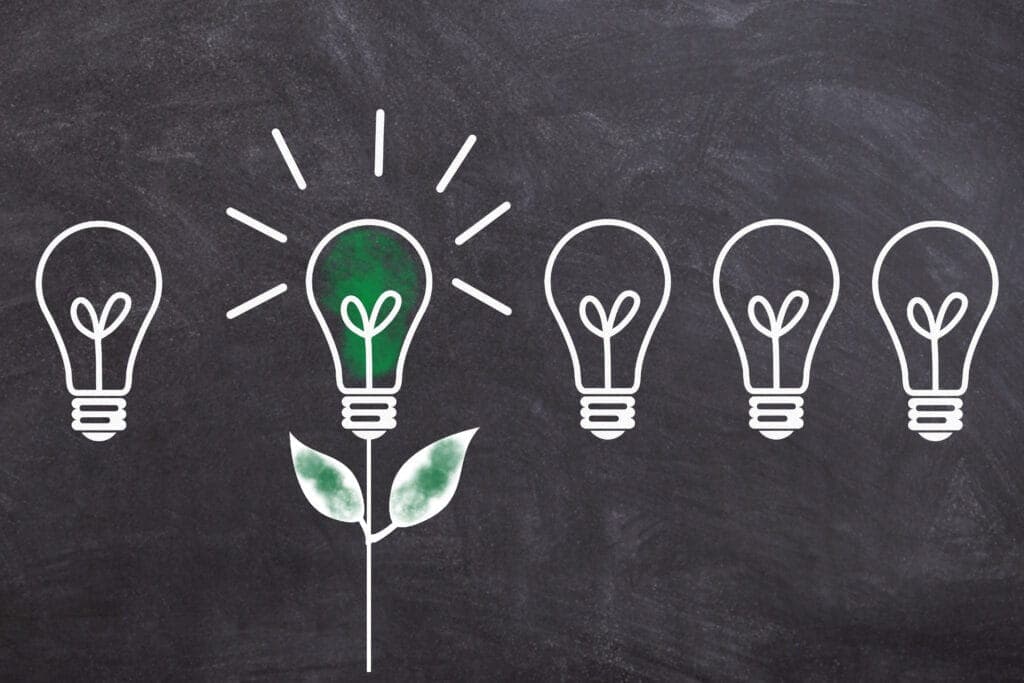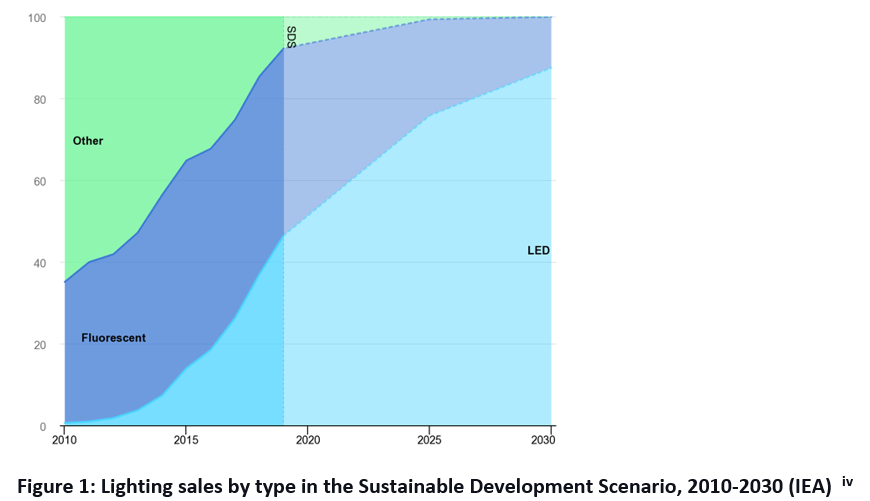
How much energy did your school consume last year? How much of that energy was in the form of electricity? What were the carbon emissions associated with that consumption? These are questions that every school leader should be asking, especially this week in the context of COP26 meeting in Glasgow.
For many schools, electricity is one of the largest operating costs after salaries and benefits. While some factors that affect schools’ operational energy use are fixed or can’t be controlled (for example building design and seasonal temperature variation), there are nevertheless many things schools can do.
Here are 8 ways schools can reduce their energy consumption and cut carbon emissions based on whole-school sustainability audits Metanoia has conducted with international schools.
Space cooling for schools in hot climates may account for 65%-75% of schools’ electricity costs.
Although recently built schools may be cooled with centralised chiller technology, many still rely on residential type air-conditioner units to cool classrooms and offices. In the case of older buildings, these units may have been installed many years ago. Although they may be well maintained and may still be operating normally, older AC units are much less efficient than the best available technology today.
This is true for two reasons. Firstly, technological improvements, driven, in part, by tighter energy efficiency standards, such as Hong Kong’s Mandatory Energy Efficient Labelling Scheme (MEELS), Singapore’s Mandatory Energy Labelling Scheme (MELS), or the UAE Energy Efficiency Label program (EESL), means recently installed AC units are more efficient. Second, ageing equipment operates less efficiently. An industry rule of thumb is that old units become less efficient by 3% every year on average; compounded, that amounts to a 26% decline after 10 years.
Does your school know how old its air conditioning fleet is? Chances are your older air conditioners are operating efficiency is well below what’s possible.
Metanoia estimates that schools may be able to achieve an energy saving of as much as 40% by upgrading old AC units to today’s best available technology.
While it is best practice to ensure your school’s air conditioning fleet consists of the most energy efficient units on the market, these efforts are wasted if the people using the air conditioners are doing so in a wasteful way. Behaviour-based factors that can affect the efficiency of air conditioners include:
Air conditioner technology has changed little since the air conditioner was invented by Willis Carrier in 1902. 90% of the energy an AC unit uses is consumed by the compressor, and in ACs today, as then, the compressor is turned on and off automatically by a thermostat based on measurement of the room temperature.
This is a crude way of determining how much cooling energy the room really needs the aircon unit to provide, because it doesn’t take account of the underlying thermodynamics of the cooling cycle. The result is that the compressor operates for much longer than necessary, wasting energy.
Coolnomix is a patented device that can optimise compressor run time, saving up to 25% with no impact on thermal comfort. It can be retrofitted in under an hour on the wall next to existing AC units and has a typical payback of 2 years.
Contact [email protected] to learn more.
Has your school conducted a lighting inventory recently?
Lighting is responsible for about 5% of the world’s greenhouse gas emissions [ii]. According to the Climate Group, a global switch to LED lighting technology would save 1.4 Gigatons of CO2 and avoid the construction of 1,250 power stations.
Although lighting is a relatively small component of most schools’ electricity costs, many still find that there are worthwhile opportunities to save energy and cost by upgrading lighting hardware.
The lighting installations in many schools today are a mix of technologies. Incandescent lamps are now a thing of the past while some form of fluorescent lighting is common. Fluorescent tubes (typically referred to as T5, T8 or T12 based on their diameter), and compact fluorescent lamps (CFLs) are in widespread use. They range in efficiency from 80 – 100 lumens per Watt in the case of the tubes and 50-70 lm/W for CFLs. While they are a significant improvement on the old incandescent lamps (14 lumens per Watt), the best LEDs on the market today trump them by as much as 30%, with efficiencies of up to 150 lm/W commonly available.
LEDs have grown in popularity in the last ten years from a market share of about 1% in 2010 to 46% in 2019. [iii] The IEA projects they will be nearly 90% of the market by 2030 (see Figure 1). Although more expensive, LEDs last 50,000 hours or more (at least six times longer than an average CFL) and the payback time can be as little as 3 years.
Many schools have centralised building management systems (BMS) covering at least some the buildings on campus. To varying degrees, BMS can monitor, and sometimes control, the heating, ventilation, and air conditioning (HVAC), plumbing and drainage, swimming pool, power consumption and security systems, among other things.
In many schools, the use of the BMS is focussed on ensuring these systems operate as expected day in and day out. Few schools take full advantage of their energy-saving capabilities or the educational possibilities they offer. For example, some BMS can be used to standardise set-points for air conditioners and controlling auto on/off times for air conditioners and lights. Furthermore, if the BMS stores energy consumption data, deeper analysis of energy use patterns can reveal additional energy saving opportunities for the school, and the data can also be used in the curriculum and project-based learning activities.
Windows play an important role in building energy efficiency. What do you know about the windows in your school?
Even though school buildings are constructed to code, local building codes vary considerably in their requirements. As a result, many school buildings continue to be built with single-pane glass windows which are a major source of solar heat gain in hot climates and heat loss in cold climates.
The rate of heat transfer through a material is indicated by its U-value measured in Watts per square meter-Kelvin. A lower U-value indicates that the material is a good thermal insulator, and thus is more energy efficient. A typical U value for single-glazed window is 4-5 W/m2K while a double-glazed window may have a U-value as low as 1-2 W/m2K
While a complete replacement of all the windows throughout the school would be a significant capital cost and may not always be realistic, upgrading the windows during future refurbishment or development plans certainly warrants discussion.
Window blinds can be used to partially mitigate the thermal inefficiencies of window glass, but they have the disadvantage of blocking natural light and requiring more artificial light.
Many schools heat their swimming pools year-round, and a significant amount of energy is wasted by means of evaporation from the surface of the pool.
Heat loss from the surface of a swimming pool is determined by the rate of evaporation from the surface. In an unoccupied pool, that, in turn, is a function of the surface area, the relative humidity of the indoor air, and the difference between the indoor air temperature and the water temperature.
While acknowledging that the thermal comfort of students using the pool is highly subjective matter, reducing the water temperature by 1-2 degrees Celsius can result in meaningful energy savings.
Besides adjusting the water temperature, schools might also consider installing a pool cover. A pool cover reduces the heat loss by limiting the evaporation. Most are designed to be conveniently retracted when the pool is in use.
Most schools have some unutilized roof space that is suitable for the installation of solar panels, but it’s not always apparent to the untrained eye. Whether the resulting renewable energy is used on-site or sold to the power company, once paid for, the installation has very low operating costs, low maintenance requirements, and (depending on local labour costs) will pay for itself in 5-10 years, while continuing to generate clean energy for another 15-20 years after that.
In addition to reducing the school’s electricity bill, on-site solar power can be part of a school’s plan to reduce its carbon footprint or become carbon neutral.
Most school solar systems are launched to some initial fanfare but remain invisible for the rest of their operating life, as they are located on rooftops that few people in the school community see on a day-to-day basis or have regular access to.
Metanoia specialises in helping schools leverage their solar investment for educational purposes through authentic, real-world learning opportunities for students and faculty alike. Watch our video about our solar project-based learning course.
Conclusion – Energy saving in schools and the educational opportunity
More and more countries and organisations are committing to becoming carbon neutral by 2050. For students to succeed in the ‘greener’ world of tomorrow, a sound understanding of the changes needed to achieve this is essential.
The 8 energy related improvements for schools mentioned above offer not only economic opportunities, but also important educational ones. With these energy hacks, schools can also utilise the campus as a living laboratory and provide students with learning and skills that will enable them to flourish in a sustainable future.
[i]Hoyt, Tyler, Edward Arens, and Hui Zhang. “Extending Air Temperature Setpoints: Simulated Energy Savings and Design Considerations for New and Retrofit Buildings.” Building and Environment 88 (2015): 88-96. https://doi.org/10.1016.
[ii] https://www.theclimategroup.org/led
[iii] https://tinyurl.com/6dwpkkcv
[iv] https://tinyurl.com/3kbpru2n
